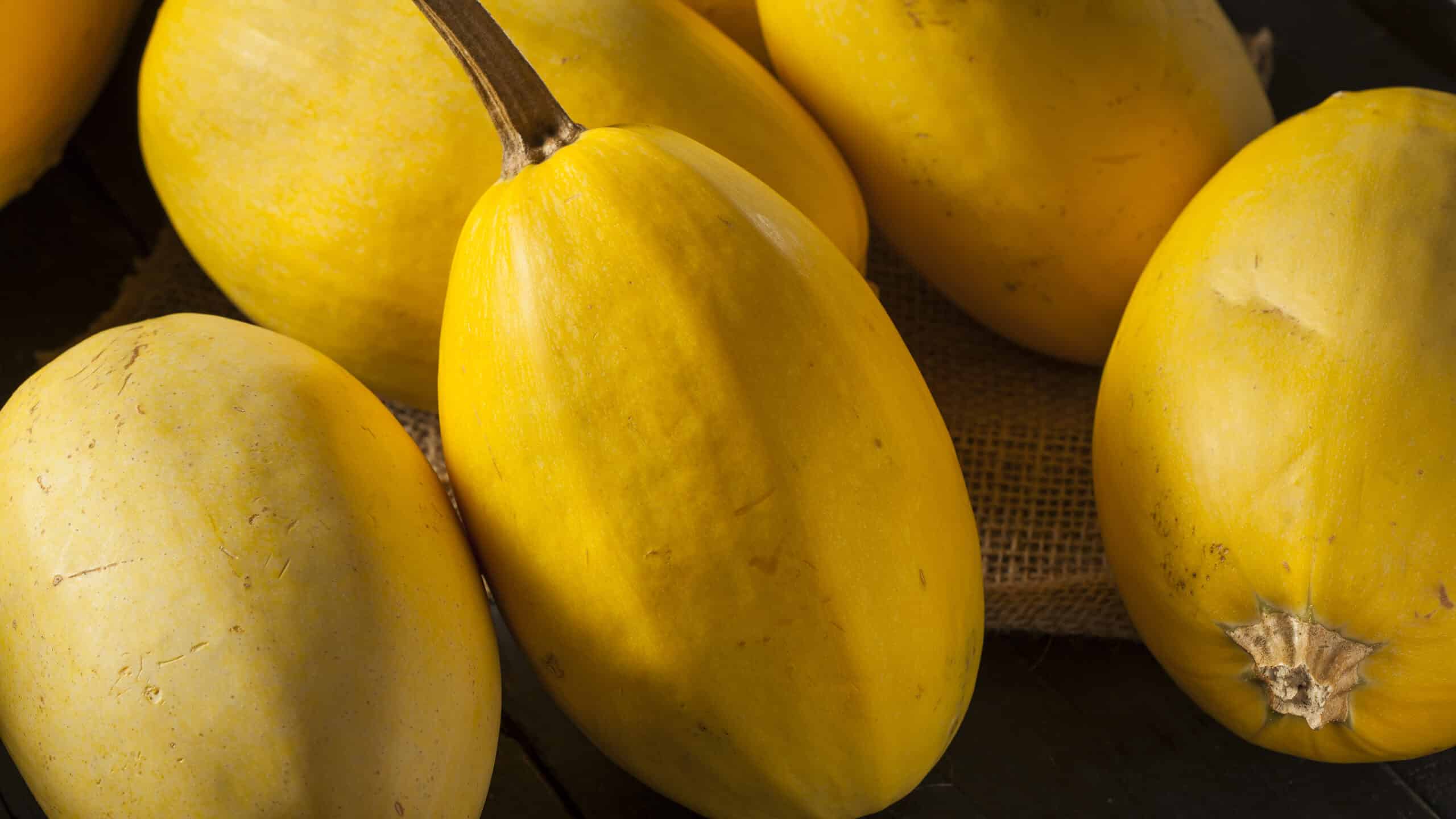If you’re considering your options between butternut squash and spaghetti squash, you’ve come to the right place. While butternut and spaghetti squashes are from the same vegetable family, they have some distinctive qualities worth considering. Physically, the two squashes are easy to tell apart. Open them up and each has a unique texture and different taste profiles. In cooking, they can be prepared in similar ways. However, some popular recipes for spaghetti squash utilize these differences, and can't be substituted with butternut squash very well.
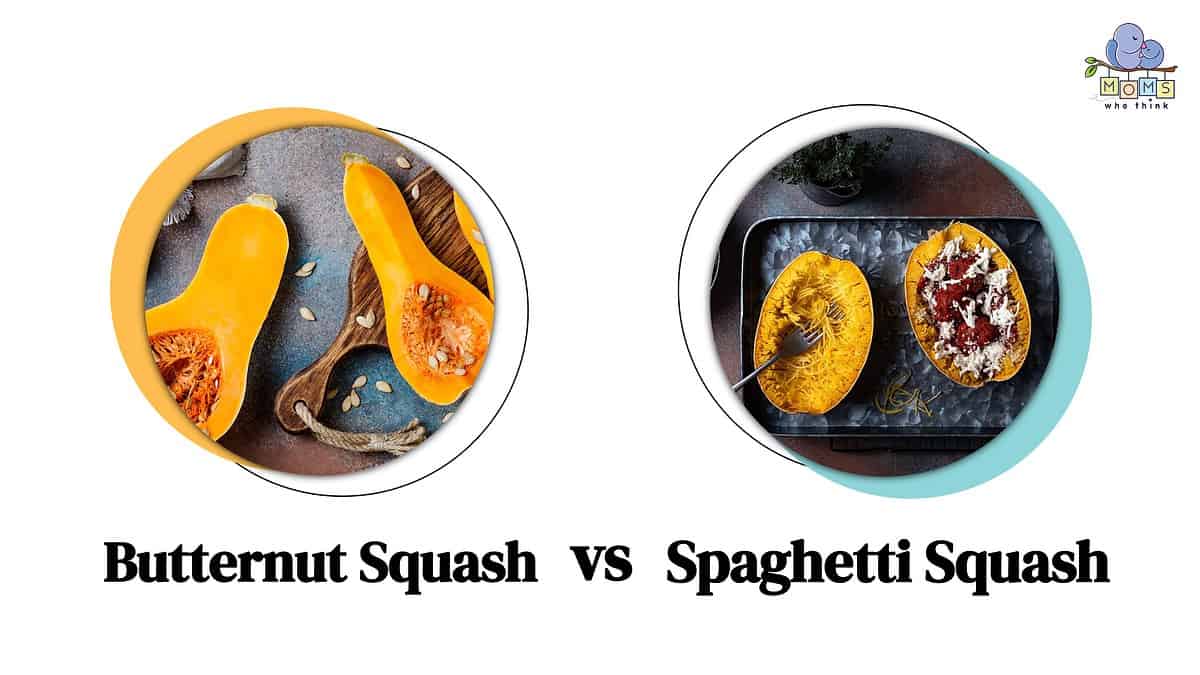
©
Let’s get into the details. Keep on reading to learn about the history of these two squashes. We’ll talk about their popular uses and how to grow and prepare them. Once you’re done reading, you’ll know which one will best fit your next meal plan. And maybe you’ll even want to try out both in different dishes!
Butternut Squash vs. Spaghetti Squash: The Main Differences Explained
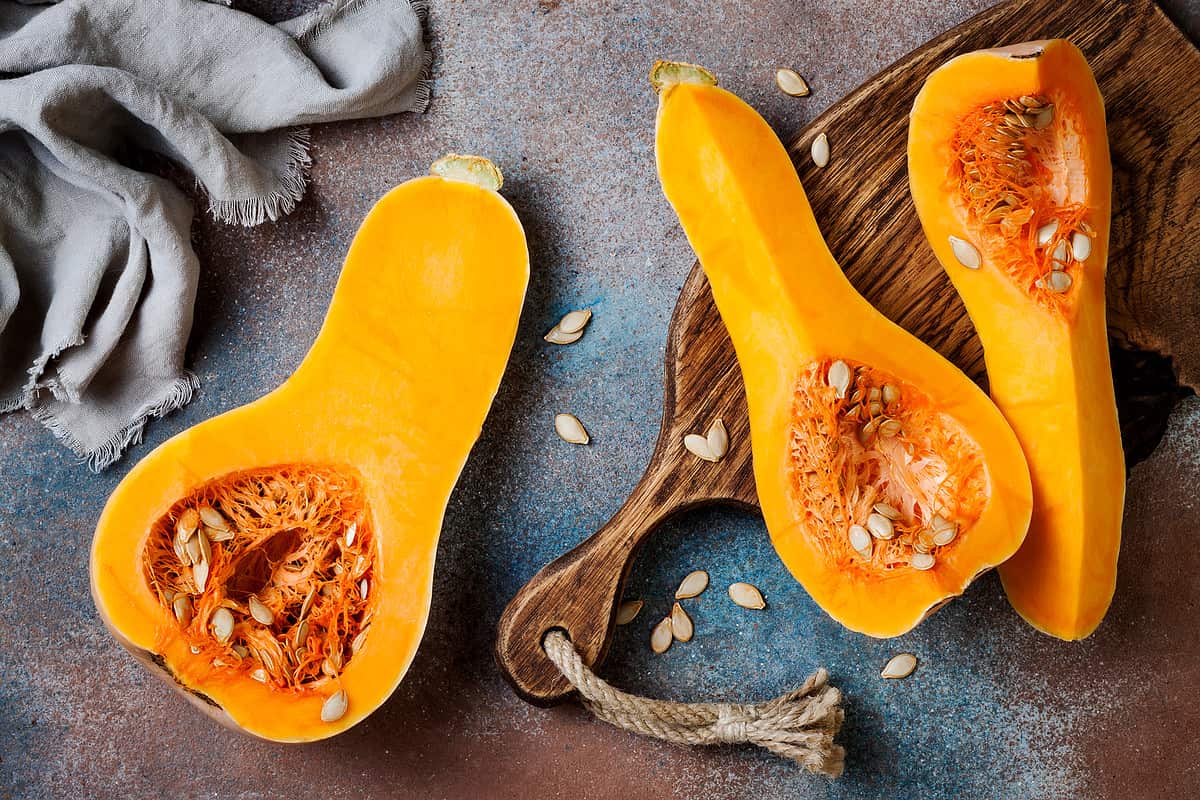
©iStock.com/sveta_zarzamora
The primary difference between butternut squash and spaghetti squash is their texture and taste. Spaghetti squash has a mild, somewhat nutty flavor and texture with strands that resemble spaghetti. On the other hand, butternut squash has a sweet, nutty flavor and a smooth, creamy texture when cooked.
Butternut squash is versatile and can be roasted, mashed, pureed, or used in baking, while spaghetti squash is often used as a low-carb substitute for pasta or simply roasted.
What is Butternut Squash?
Butternut squash is a gourd that is similar to pumpkin in flavor. Physically, butternut squash is a shade of brown, beige, or light yellow. They can vary in shape but usually come in round or elongated forms. According to Plantura Magazine, they can appear peanut-shaped or pear-shaped. They have a bright interior and a very rich taste. Butternut squash can be used in a variety of sweet and savory dishes. Since its introduction, butternut squash has been popular in all kinds of dishes and households around the world.
History and Origin
The process of growing squash from seeds has been around for thousands of years. It has historical roots in Native American agricultural practices and can be traced to North America during the time that trade routes began to boom (via U of A Agriculture). This likely increased its spread and thus the breeding of many squash types. The origin of butternut squash (Cucurbita moschat) is hard to pinpoint perfectly, but there are theories that it originated in the U.S. during the 1930s. It was likely a mutation from another type of squash called a Canadian crookneck squash. An early version of the beloved squash type is credited to both Charles A. Legget and Professor Robert E. Young, both of who hailed from Massachusetts and worked in agriculture or agricultural studies (via Specialty Produce).
How is Squash Grown?
Both types of butternut and spaghetti squash have a similar, very long growth process. They are both varieties of winter squash which means they are grown during the summer, harvested in the fall, and prepared in the winter. In terms of planting, you can either plant them directly into the ground as long as there's no chance of freezing, or you can grow them in windowsill planters until it's safe to plant them without the risk of low temperatures. Squash grows best in 60-70º soil. Each seed should be about 1 inch deep and 2-3 feet apart. You can also form groupings of 3-4 seeds that are planted 2-3 feet away from another grouping of seeds. These will form clusters of squash plants (via Farmer's Almanac).
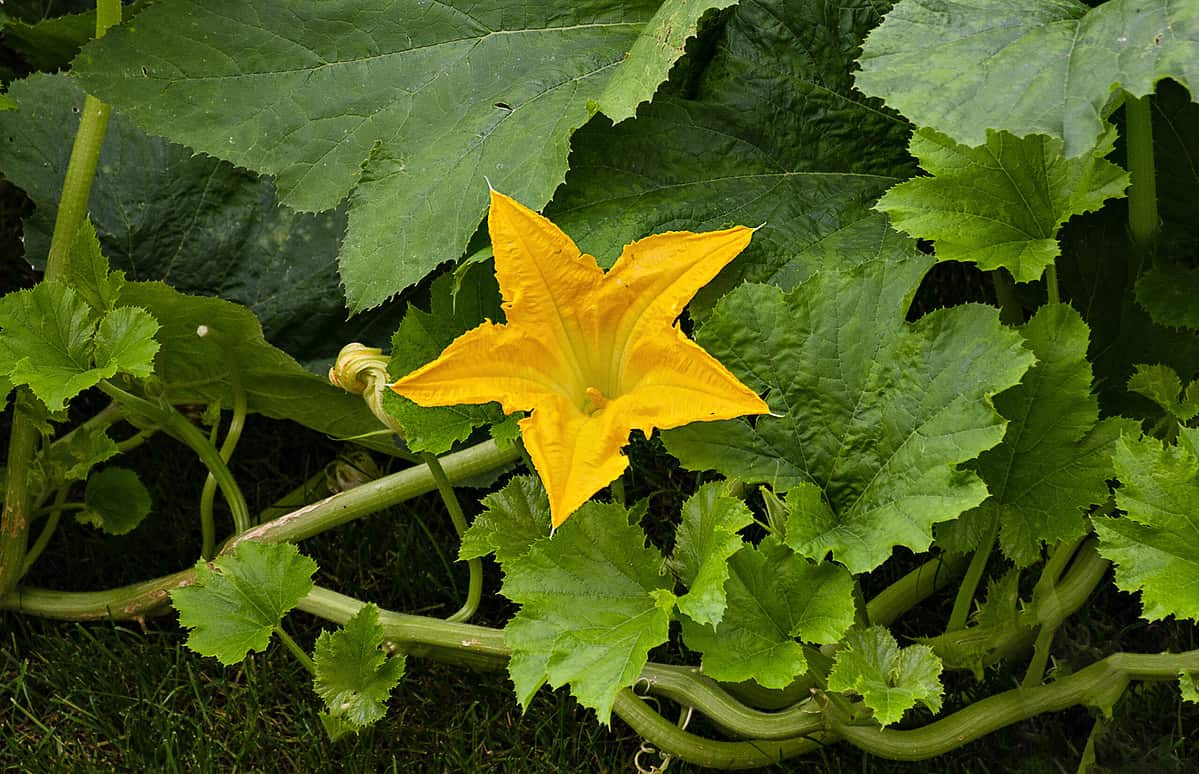
©iStock.com/lbrix
Next, the plants will flower and with careful watering and pollination from your friendly local bees, baby squash plants will start to form. Be sure to leave them until the squash is fully formed before disconnecting the stalk from the vine of your homegrown squash plant! And finally, the winter squash has to go through a curing period. This is perhaps a lesser-known fact since store-bought squash already has gone through this. Curing means leaving the fully grown, picked, and washed squash alone for 10 days to 2 weeks. This helps the rind harden so the squash can be stored all winter season and cooked at any time. This is why squash varieties don't go bad when they're sitting on your counter for weeks at a time (via Urban Farmer)!
What is Spaghetti Squash?
Onto spaghetti squash (Cucurbita pepo), the fibrous cousin of butternut. Spaghetti squash is smaller and often oblong and circular in shape. It can come in vibrant shades of yellows and greens, with cool patterns and stripes depending on the growth process. Open it up and you'll find pale yellow flesh, that already has quite a unique texture. This is typically scooped out with a spoon or a form and it gets its name from the spaghetti-like quality of the insides. It has a crunchy texture and a mild flavor that is often enhanced by sauces or other vegetables in spaghetti squash-based dishes (via Plantura Magazine).
History and Origin
Like the butternut variety, spaghetti squash also has ties to Native American agricultural history and the impact of world trade routes. There are recorded accounts of spaghetti squash in Manchuria, China during the 1850s, and the Sakata Seed Company of Japan first introduced squash seeds as a product in the 1930s. Spaghetti squash seeds were brought to North America in 1934 and sold as “vegetable spaghetti.” It was used as a substitute for pasta during World War II when pasta was hard to get (via Nature's Produce). Modern spaghetti squash retains its popularity, especially because it is healthy, nutritious, and delicious!
Butternut Squash vs. Spaghetti Squash Nutritional Value
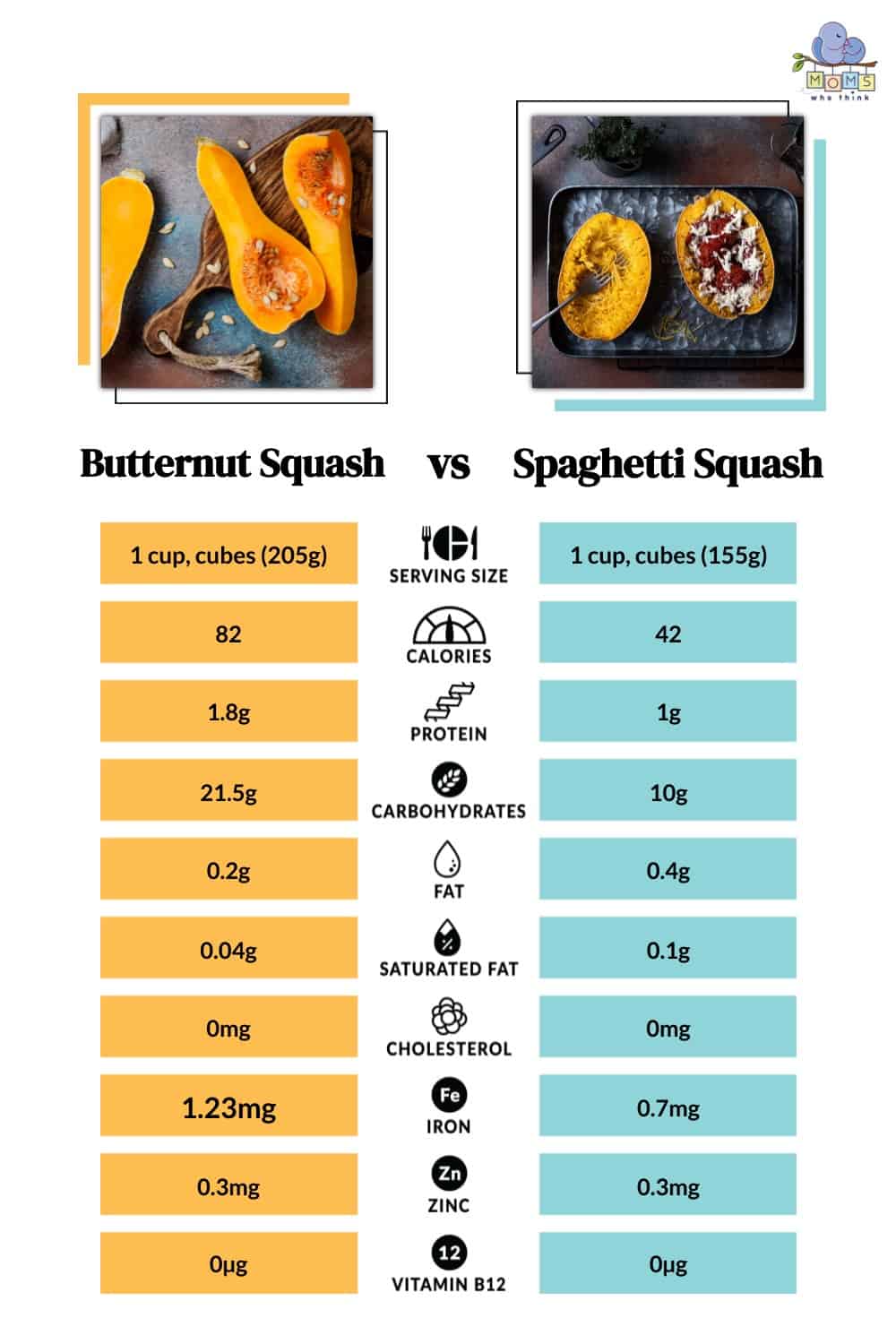
©
For both butternut and spaghetti squash, the preparation of dishes impacts the nutritional value. If there's added sugar or more cheese, this will change the health value. However, the vegetables on their own pack quite a punch and will likely add to the nutritional value of any dish. One cup of chopped butternut squash has about 82 calories, 2 grams of protein, 7 grams of fiber, and 22 grams of carbohydrates. It is full of Vitamins A, C, and E, as well as healthy B vitamins like thiamine, niacin, and pyridoxine. Butternut squash is full of antioxidants and natural amounts of folate, magnesium, manganese, and potassium (via Healthline).
Spaghetti squash has a similar nutrient profile. According to Healthline, the breakdown of a cup of cooked spaghetti squash is as follows. There are about 10 grams of carbohydrates, 1 gram of protein, 0.4 grams of fat, and 42 calories. Spaghetti squash also contains manganese, vitamin B, niacin, and pantothenic acid. It is full of antioxidants and the fibrous quality of spaghetti squash benefits your digestive tract and may help with relieving constipation. It is low in calories but high in fiber which makes it a great option for losing weight in a healthy way.
Popular Uses
Butternut squash is a common ingredient in creamy soups, hearty salads, and even desserts. Butternut pie anyone? It can be stuffed with rice or meats for a delicious and rich, warming meal. Try it roasted or mashed, in dips or spreads and you can even slice it and bake it until crispy as a substitute for fries.
Spaghetti squash is an easy substitute for pasta of any kind. Its mild flavor means it's a great vehicle for other sauces or garnishings. Like butternut, it can be stuffed with yummy cheeses, meat sauces, other vegetables, or cheeses for a filling and delicious meal. Try it in lasagna, or cook it up with seafood. The rind is edible, and you can use it as a bowl by adding your toppings and digging right in!
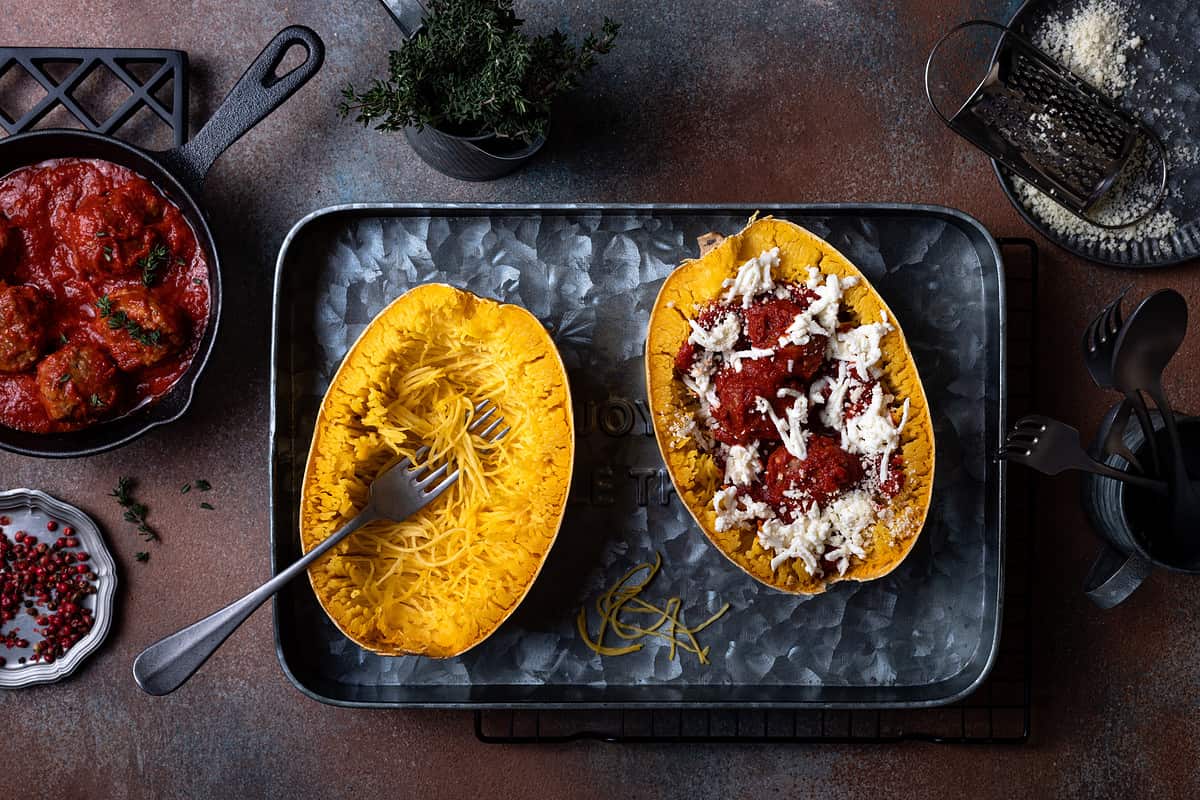
©iStock.com/sveta_zarzamora
Possible Alternatives
There are many other types of squash that can be used for some of the aforementioned dishes. Other winter squash types include acorn, honey nut, kabocha, delicata, calabaza, and pumpkin (via Real Simple). You can easily substitute spaghetti squash for pasta, like spaghetti!
Are Butternut Squash and Spaghetti Squash the Same Thing?
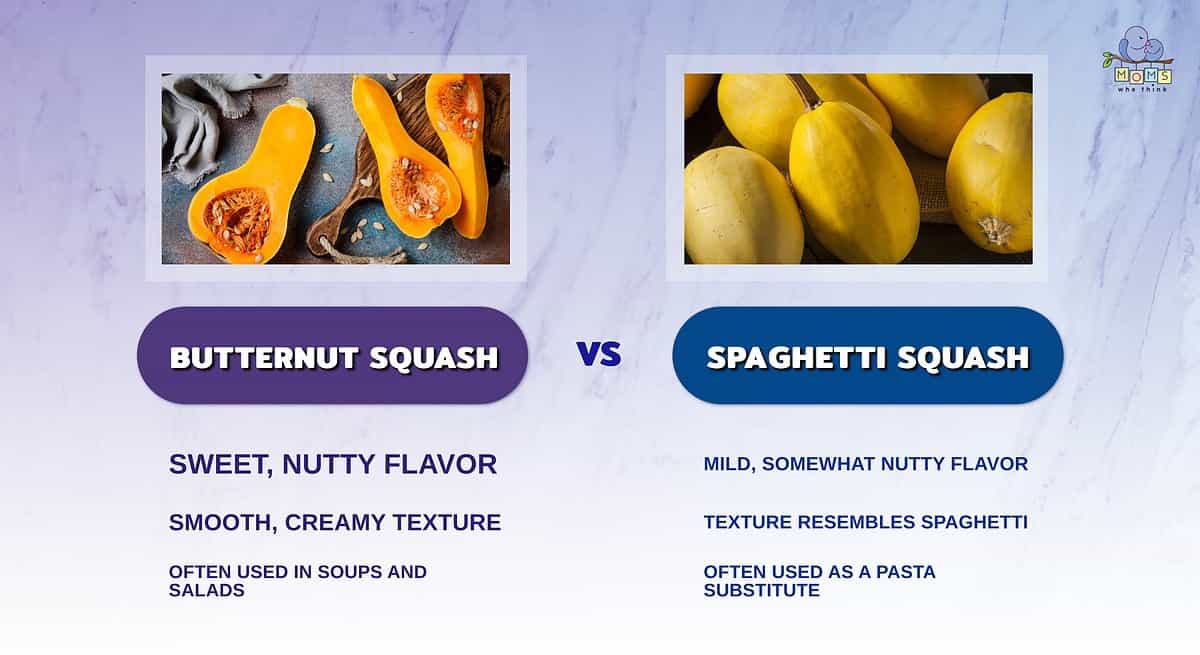
- The flavors of butternut and spaghetti differ, making them suitable for different purposes. Butternut squash has a sweet, nutty flavor, while spaghetti squash has a mild, somewhat nutty flavor.
- The creaminess of butternut squash makes it a versatile ingredient that can be thrown into a variety of recipes. The spaghetti-like texture of spaghetti squash makes it suited for other uses than what butternut is used for.
- Speaking of what these two squashes are used for, butternut is commonly eaten on its own or as part of a soup or salad. Meanwhile, spaghetti squash is often used as a pasta substitute, due to its texture and taste.
Butternut squash and spaghetti squash are both winter squashes that share certain qualities. But their appearance, texture, and uses are significantly different. Butternut squash is rich, creamy, and comparable to pumpkin in its uses. Spaghetti squash lives up to its name in texture and is a great alternative to pasta dishes, with a mild flavor for spicing up. Perhaps their biggest shared quality is that they are both absolutely delicious!
Try this sweet butternut squash:
Print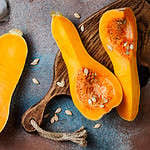
Sweet Butternut Squash
- Total Time: 45 minutes
Ingredients
- 2 lbs. butternut squash, peeled and cut into 1-inch cubes
- 4 Tablespoons butter, softened to room temperature
- 2/3 cup firmly packed brown sugar
- 1 (20 oz) can pineapple chunks (about 2 cups) drained
- 3/4 teaspoon salt
- 1/2 teaspoon coarsely ground black pepper
- 1 teaspoon dried ginger
- 1/2 cup toasted walnuts, coarsely chopped
Instructions
- Set the oven rack in the middle position. Preheat the oven to 425°F. line a 17 inch by 11 inch by 1 inch jelly roll pan with foil, shiny side up, and coat with vegetable spray. Place squash in a large bowl.
- Melt butter in a saucepan over medium heat. Add brown sugar and stir with a wooden spoon until combine.
- Add pineapple, salt, pepper, and ginger. Bring to a boil, reduce heat to medium, and cook until mixture is syrupy, about 15 minutes.
- Pour pineapple mixture over squash and toss to coat. spread squash on prepared pan.
- Bake 20 minutes, shaking pan after 10 minutes for even cooking, until squash is soft when pierced with a small knife.
- Sprinkle with walnuts and serve immediately.
- Prep Time: 10 minutes
- Cook Time: 35 minutes
The image featured at the top of this post is ©Brent Hofacker/Shutterstock.com.
